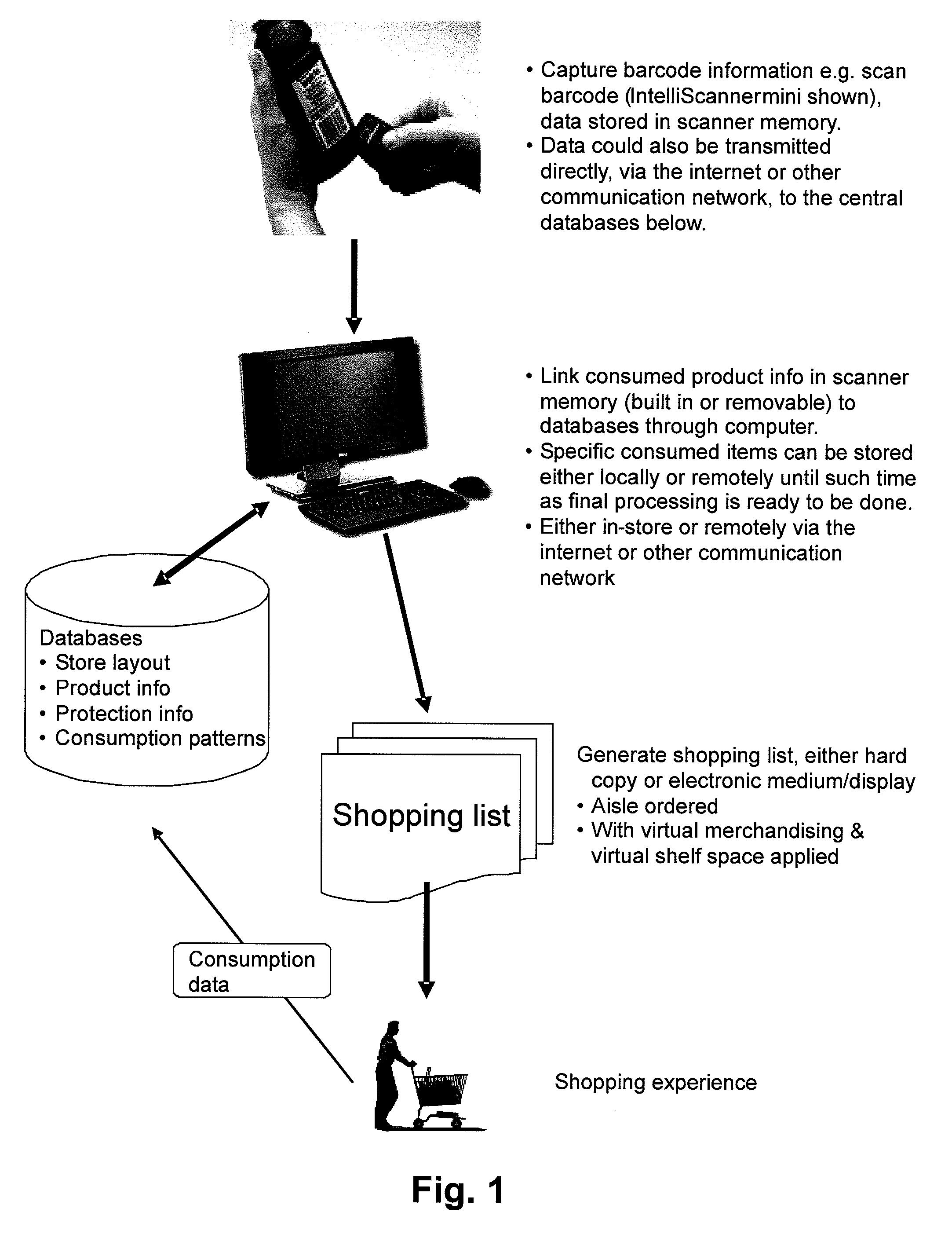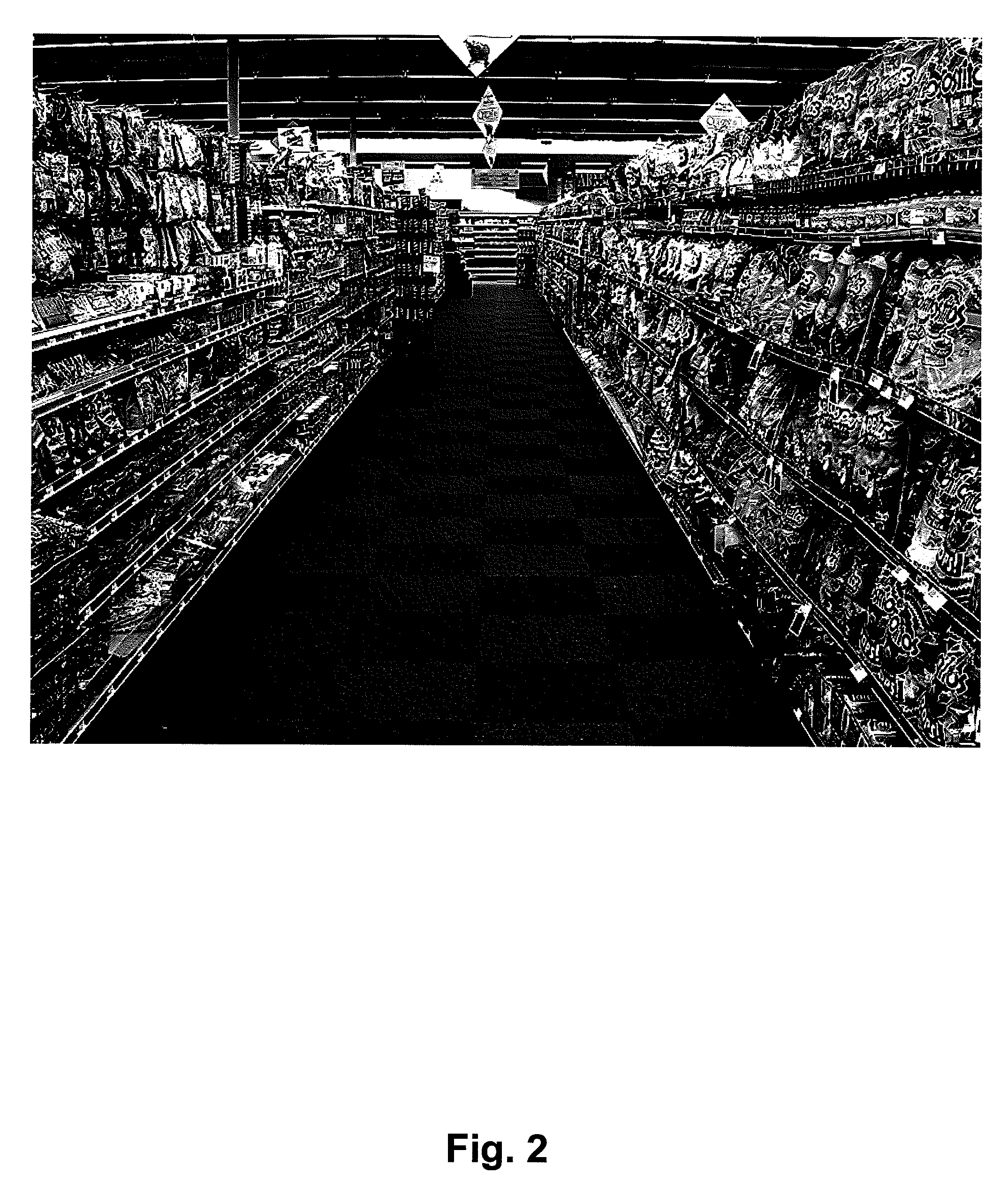Method for generating a shopping list using virtual merchandising options
a virtual merchandising and shopping list technology, applied in the field of enhanced merchandising methodology, can solve the problems of not being widely used, requiring etc., and achieves the effect of convenient shopping, significant and continuous overhead investment, and little or no value or incentiv
- Summary
- Abstract
- Description
- Claims
- Application Information
AI Technical Summary
Benefits of technology
Problems solved by technology
Method used
Image
Examples
Embodiment Construction
[0037]The present invention relates to an enhanced shopping system and method which utilizes technology and information in a manner which uniquely changes (1) the way grocery retail industry captures and retains customers, (2) how customers organize their shopping efforts in grocery stores, (3) the approach to advertising and reaching customers, and (4) the information available to retailers and merchandisers related to customer (a) shopping patterns, (b) responses to merchandising and advertising, and (c) specific impact of discounting / coupons. Even though the application focuses on the grocery retail industry, the concepts are equally applicable to any retail segment where consumable goods are involved (e.g. also applicable to small business office supply segment).
[0038]This system and method will create a new type of program for the home. In particular, in one embodiment, the system enables groceries to be scanned after use and stored on a portable memory device, such as a flash ...
PUM
 Login to View More
Login to View More Abstract
Description
Claims
Application Information
 Login to View More
Login to View More - R&D
- Intellectual Property
- Life Sciences
- Materials
- Tech Scout
- Unparalleled Data Quality
- Higher Quality Content
- 60% Fewer Hallucinations
Browse by: Latest US Patents, China's latest patents, Technical Efficacy Thesaurus, Application Domain, Technology Topic, Popular Technical Reports.
© 2025 PatSnap. All rights reserved.Legal|Privacy policy|Modern Slavery Act Transparency Statement|Sitemap|About US| Contact US: help@patsnap.com



